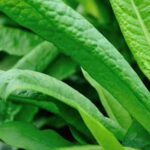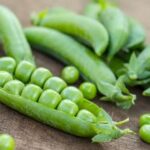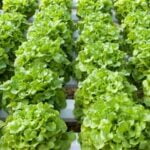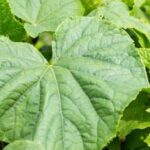Soil quality is a critical factor in the success of any vegetable garden. The type of soil used can significantly impact plant growth and overall yield. Aspiring gardeners must understand the importance of using the right soil for their vegetable garden to ensure optimal results and a bountiful harvest. Factors such as soil composition, texture, and fertility all play a vital role in determining the success of a vegetable garden.
The quality of soil used for vegetable gardens can directly affect plant growth and development. Different types of soil, such as topsoil, loamy soil, sandy soil, and clay soil, each have their own benefits and drawbacks when it comes to supporting healthy plant growth. Understanding the ideal composition of soil for vegetable gardens, including the balance of sand, silt, clay, organic matter, and essential nutrients is crucial to cultivating a thriving garden.
In this article, we will explore the various types of soil suitable for vegetable gardening and discuss their respective benefits and drawbacks. Additionally, we will delve into topics such as testing soil quality, incorporating amendments to improve soil composition, choosing the right soil for specific vegetables, maintaining soil health, and providing practical tips for beginners on how to prepare and maintain healthy soil for successful vegetable gardening.
By understanding the importance of soil quality in vegetable gardening and implementing best practices in caring for the soil, gardeners can ensure optimal plant growth and harvest yield.
Types of Soil for Vegetable Gardens
When it comes to vegetable gardening, the type of soil used plays a critical role in the success of the garden. Different types of soil offer unique benefits and drawbacks, making it essential for gardeners to understand their options and make informed decisions. Here are some common types of soil suitable for vegetable gardening:
Topsoil
Topsoil is the uppermost layer of soil, typically rich in organic matter and nutrients. It provides an excellent growing medium for vegetables and promotes healthy plant growth. However, topsoil can vary in quality, so it’s important to choose a reputable supplier or test the topsoil before use.
Loamy Soil
Loamy soil is often considered ideal for vegetable gardening due to its balanced composition of sand, silt, and clay. This type of soil retains moisture well while allowing for proper drainage, making it suitable for a wide range of vegetables. However, loamy soil may require occasional amendments to maintain its fertility.
Sandy Soil
Sandy soil has large particles that drain water quickly, which can be beneficial for some vegetables that prefer well-drained conditions. However, sandy soil also requires frequent watering and regular additions of organic matter to improve its nutrient content.
Clay Soil
Clay soil has small particles that hold onto water and nutrients more than other soil types. While this can be advantageous for certain vegetables, clay soil tends to become compacted easily and may require significant amendments to promote better root growth and prevent waterlogging.
Understanding the characteristics of each type of soil empowers gardeners to make informed decisions about which type best suits their specific needs. Whether opting for topsoil or working with loamy, sandy, or clay soils directly from the garden site itself, ensuring proper preparation and maintenance will ultimately contribute to a successful vegetable garden harvest.
Soil Composition
When it comes to vegetable gardening, one of the key factors that can greatly impact plant growth and overall yield is the quality of the soil. The composition of the soil plays a crucial role in providing essential nutrients, proper drainage, and a suitable environment for plant roots to thrive. In order to ensure successful vegetable gardening, it is important to understand the ideal composition of soil for this purpose.
The ideal composition of soil for vegetable gardens should include a balanced combination of sand, silt, and clay. This balance is known as loamy soil, which is often considered the best type of soil for gardening due to its ability to retain moisture while also providing adequate drainage.
Loamy soil allows for good root development and nutrient uptake by plants. Additionally, organic matter in the form of compost or well-rotted manure should be incorporated into the soil to provide essential nutrients and improve overall soil structure.
Key Components of Ideal Soil Composition
- Sand: Provides good drainage and aeration for plant roots
- Silt: Contributes to soil fertility and holds moisture
- Clay: Helps retain water and nutrients for plant use
- Organic Matter: Adds essential nutrients and improves soil structure
In addition to having the right balance of sand, silt, clay, and organic matter, it is important to ensure that the soil contains essential nutrients necessary for plant growth. These include nitrogen, phosphorus, potassium, calcium, magnesium, sulfur, and various micronutrients like iron and zinc. Testing the nutrient content of the soil can help determine if any amendments are needed to supplement these essential elements.
Testing Soil Quality
Testing the quality of soil for vegetable gardening is an essential step in ensuring optimal plant growth and yield. There are several factors to consider when assessing soil quality, including pH levels, nutrient content, and texture analysis. Understanding these aspects of soil composition can help determine the necessary amendments for improving soil quality and creating an ideal environment for growing vegetables.
One important aspect of testing soil quality is analyzing its pH levels. The pH level indicates the acidity or alkalinity of the soil, which directly affects the availability of nutrients to plants. Most vegetables thrive in slightly acidic soil with a pH range between 6.0 and 7.0. Testing kits are available at garden centers and provide a simple way to determine the pH level of the soil in your vegetable garden.
In addition to pH levels, assessing the nutrient content of the soil is crucial for successful vegetable gardening. Key nutrients such as nitrogen, phosphorus, potassium, and various micronutrients play a vital role in plant growth and development. Soil testing laboratories can provide detailed analyses of the nutrient levels in your garden’s soil, offering valuable insights into any deficiencies or excesses that may need to be addressed through appropriate fertilization or organic amendments.
Another important factor to consider when testing soil quality for vegetable gardening is its texture analysis. Different types of soil (e.g. sandy, loamy, clay) have distinct characteristics that affect water retention, drainage, and overall tilth. By conducting a simple “feel test,” gardeners can assess their soil’s composition by evaluating its ability to form a ball when squeezed and then determining how easily it crumbles apart.
| Aspect | Consideration |
|---|---|
| pH Levels | Slightly acidic (pH 6.0-7.0) is optimal for most vegetables |
| Nutrient Content | Key nutrients include nitrogen, phosphorus, potassium, and micronutrients |
| Texture Analysis | Determines water retention, drainage, and tilth properties |
Soil Amendments
When it comes to vegetable gardening, the quality of the soil used can significantly impact plant growth and overall yield. In order to ensure successful gardening, it is important to understand the different types of soil amendments that can be used to improve soil quality. Soil amendments are essential for providing plants with the necessary nutrients and organic matter needed for healthy growth.
Compost is a popular and effective soil amendment for vegetable gardens. It is rich in organic matter and nutrients, making it beneficial for improving soil structure and fertility. Compost also helps retain moisture in the soil, which is crucial for maintaining healthy plants. Whether homemade or store-bought, adding compost to your garden soil can enhance its overall quality and promote robust plant growth.
Manure is another valuable soil amendment that can greatly benefit vegetable gardens. It provides essential nutrients such as nitrogen, phosphorus, and potassium, which are vital for plant growth. Manure also improves soil structure and enhances its water retention capacity. However, it is important to use well-aged manure to prevent burning of plant roots due to high ammonia levels. When used properly, manure can contribute to the health and productivity of your vegetable garden.
In addition to compost and manure, organic fertilizers are also a valuable option for improving soil quality in vegetable gardens. These fertilizers are derived from natural sources such as plant or animal materials and provide essential nutrients for plants without the use of synthetic chemicals.
Organic fertilizers not only improve soil fertility but also promote long-term sustainability by enhancing beneficial microbial activity in the soil. By incorporating these types of amendments into your gardening practices, you can create a nutrient-rich environment that supports healthy plant development and ensures an abundant harvest of fresh vegetables.
By selecting the right type of soil amendments based on your specific needs, you can effectively enhance the quality of the soil used for vegetable gardening. Properly amended soil will provide essential nutrients and organic matter necessary for robust plant growth and optimal harvest yields while promoting long-term sustainability in your garden.
Choosing the Right Soil for Specific Vegetables
When it comes to growing vegetables, the type of soil used can significantly impact the health and yield of the plants. Different types of vegetables thrive in different soil conditions, so it’s essential to choose the right soil for specific crops. Here are some specific recommendations for the type of soil best suited for growing popular vegetables:
1. Tomatoes:
Tomatoes thrive in well-draining, nutrient-rich soil with a slightly acidic pH level (around 6.0-6.8). A loamy soil with good organic matter content is ideal for tomatoes, as it allows for proper root development and moisture retention.
2. Peppers:
Like tomatoes, peppers prefer well-draining, nutrient-rich soil with a slightly acidic pH level. A sandy loam or loamy soil with good drainage is suitable for peppers, as it prevents waterlogging and promotes healthy root growth.
3. Lettuce:
Lettuce prefers a light, well-draining soil that is rich in organic matter. A loamy or sandy loam soil is ideal for lettuce cultivation, as it ensures proper air circulation around the roots and allows for healthy leafy growth.
4. Carrots:
Carrots grow best in loose, well-drained soils that are free from rocks and heavy clay. A sandy loam or loamy soil with good fertility and deep tillage is recommended for growing carrots, as it allows the roots to develop straight and uniform.
5. Cucumbers:
Cucumbers thrive in fertile, well-drained soils with a slightly acidic to neutral pH level (around 6.0-7.0). A sandy loam or loamy soil rich in organic matter is suitable for cucumbers, as it promotes healthy vine growth and fruit development.
By choosing the right type of soil for specific vegetables, gardeners can ensure optimal plant growth and harvest yield. It’s important to consider the individual needs of each vegetable crop when preparing the soil for planting. With proper selection and preparation of the soil, gardeners can create an ideal environment for their vegetable crops to flourish.
Maintaining Soil Health
When it comes to maintaining soil health in vegetable gardens, proper watering is essential. Overwatering can lead to waterlogging and root rot, while underwatering can result in stunted growth and reduced yield. It’s important to water the plants deeply, ensuring that the water reaches the root zone. One effective method is using drip irrigation, which delivers water directly to the base of the plants, minimizing water loss through evaporation.
Mulching is another important practice for maintaining soil health in vegetable gardens. Adding a layer of organic mulch such as straw, grass clippings, or compost can help retain moisture in the soil and suppress weed growth. Furthermore, as the mulch breaks down over time, it provides valuable organic matter and nutrients to the soil, improving its overall fertility.
Crop rotation is a strategy that involves changing the location of crops within the garden each season to prevent nutrient depletion and reduce the risk of pest and disease build-up. By rotating plant families and avoiding planting the same vegetables in the same spot year after year, you can help maintain a healthy balance of nutrients in the soil while also minimizing the likelihood of crop-specific pests and diseases taking hold.
These best practices for maintaining soil health are crucial for ensuring optimal plant growth and bountiful harvests in vegetable gardens. By following proper watering techniques, incorporating mulching into your gardening routine, and implementing crop rotation strategies, you can preserve and even enhance soil fertility for years to come.
Tips for Success
When it comes to vegetable gardening, the type of soil used is crucial for the success of the crop. In order to prepare and maintain healthy soil for a successful vegetable garden, there are several key factors to consider. First and foremost, beginners should prioritize choosing the right location for their garden. Sunlight plays a critical role in plant growth, so it’s essential to select an area that receives ample sunlight throughout the day.
Proper drainage is another important consideration when preparing soil for vegetable gardening. Vegetables thrive in well-drained soil, as excess water can lead to root rot and other issues. To improve drainage, raised beds or adding organic matter such as compost can be beneficial. Additionally, implementing methods for preventing soil erosion is essential for maintaining healthy soil. Mulching can help prevent erosion by protecting the soil from heavy rain and strong winds.
In terms of specific tips for beginners, it’s crucial to conduct a soil test before planting any vegetables in order to assess its quality and composition. By testing pH levels, nutrient content, and texture analysis, gardeners can make informed decisions about any necessary soil amendments. Lastly, staying vigilant with maintenance practices such as regular watering and crop rotation will ensure that the soil remains healthy and conducive to optimal plant growth.
| Key Considerations | Recommendations |
|---|---|
| Choosing the right location | Select an area that receives ample sunlight throughout the day |
| Proper drainage | Improve drainage with raised beds or adding organic matter like compost; use mulching to prevent erosion |
| Soil testing | Conduct tests on pH levels, nutrient content, and texture before planting any vegetables |
Conclusion
In conclusion, the success of a vegetable garden heavily relies on the quality of the soil used. As discussed throughout this article, the type and composition of soil, as well as proper testing and maintenance, are crucial factors in ensuring optimal plant growth and harvest yield. By choosing the right soil for specific vegetables, implementing soil amendments, and maintaining soil health through best practices, gardeners can maximize their chances of a successful and bountiful harvest.
It is essential to understand that different types of vegetables thrive in different types of soil, so it is important to choose the right soil based on the specific needs of the plants being grown. Whether it is topsoil, loamy soil, sandy soil, or clay soil, each type has its own set of benefits and drawbacks for vegetable gardening.
Additionally, the ideal composition of soil should include a balanced combination of sand, silt, clay, organic matter, and essential nutrients to support plant growth.
Regular testing of soil quality is also vital to ensure that it meets the necessary pH levels and nutrient content required for healthy plant development. With proper maintenance techniques such as watering, mulching, and crop rotation, gardeners can preserve the health of their soil and prevent nutrient depletion.
By incorporating these practices into their gardening routine, individuals can create an optimal environment for their vegetable gardens to thrive. Ultimately, using the right soil for vegetable gardens is fundamental in achieving a successful and abundant harvest year after year.
Frequently Asked Questions
What Soil Should I Use for Vegetable Garden?
For a vegetable garden, it’s best to use a well-draining, nutrient-rich soil. A mix of topsoil, compost, and organic matter is ideal for promoting healthy growth in vegetables and providing the necessary nutrients for them to thrive.
Can I Use Regular Potting Soil for Vegetables?
Regular potting soil can be used for vegetables, but it may not provide all the necessary nutrients that specific vegetable plants need. It’s better to use a soil mix designed specifically for growing vegetables to ensure they have everything they need for optimal growth.
Should I Use Topsoil or Compost for Vegetable Garden?
Both topsoil and compost can be beneficial in a vegetable garden. Topsoil provides a base for the garden bed and helps with drainage, while compost adds valuable organic matter and nutrients to the soil. A combination of topsoil and compost is often recommended for a healthy and productive vegetable garden.

If you’re looking to get into vegetable gardening, or are just looking for some tips on how to make your current garden better, then you’ve come to the right place! My name is Ethel and I have been gardening for years. In this blog, I’m going to share with you some of my best tips on how to create a successful vegetable garden.





